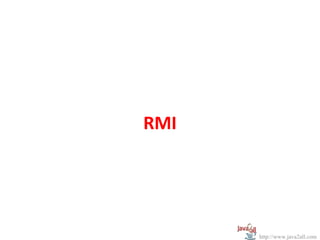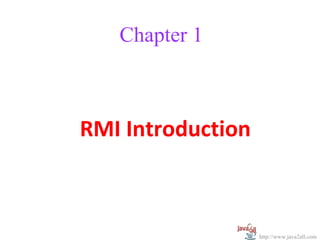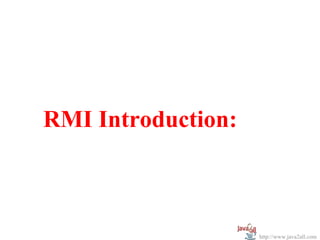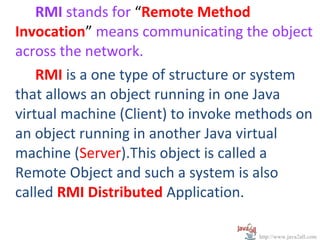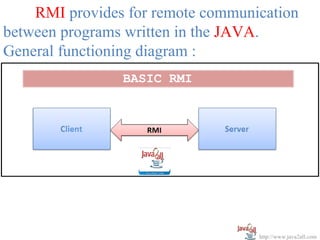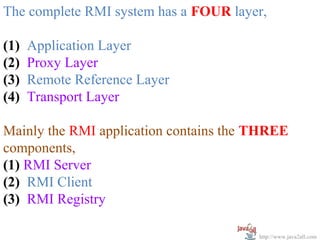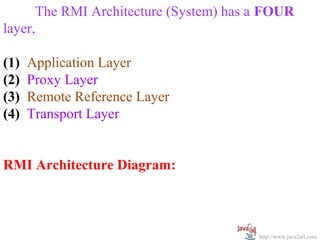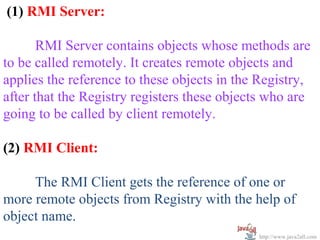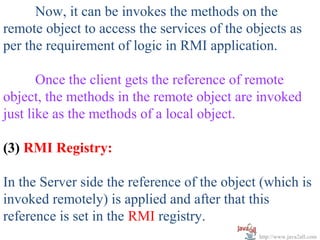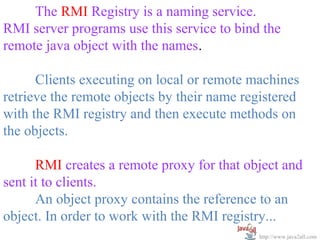The document discusses Remote Method Invocation (RMI) in Java. RMI allows objects running in one Java virtual machine to invoke methods on objects running in another Java VM. It has four layers: application layer, proxy layer, remote reference layer, and transport layer. The RMI architecture contains an RMI server, RMI client, and RMI registry. The server creates remote objects and registers them with the registry. The client looks up remote objects by name in the registry and invokes methods on them.
